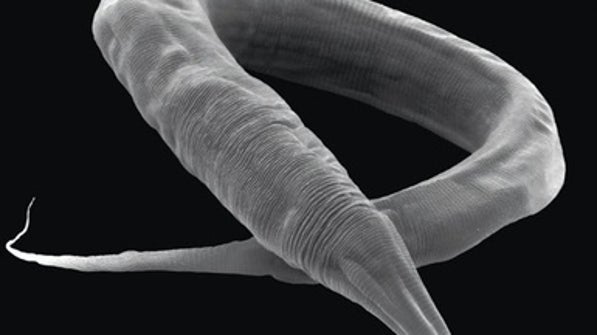
Caenorhabditis elegans would make an ace fighter pilot. That’s because the roughly one-millimeter-long roundworm, a type of nematode that is widely used in biological studies, is remarkably adept at tolerating acceleration. Human pilots lose consciousness when they pull only 4 or 5 g‘s (1 g is the force of gravity at Earth’s surface), but C. elegans emerges unscathed from 400,000 g‘s, new research shows.
This is an important benchmark; rocks have been theorized to experience similar forces when blasted off planet surfaces and into space by volcanic eruptions or asteroid impacts. Any hitchhiking creatures that survive could theoretically seed another planet with life, an idea known as ballistic panspermia.
Tiago Pereira and Tiago de Souza, both geneticists at the University of São Paulo in Brazil, spun hundreds of roundworms in a device called an ultracentrifuge. After an hour, the researchers pulled them out, convinced that the animals would be dead. But they were “swimming freely as if nothing had happened,” Pereira says. More than 96 percent were still alive, and the survivors did not exhibit any adverse physical or behavioral changes. “Life tolerates much more stress than we typically think,” as Pereira puts it. His team’s results were published online in May in the journal Astrobiology.
Still, this extreme test does not replicate the full brunt of an interplanetary journey, the researchers concede. For one thing, it took roughly five minutes for the ultracentrifuge to build up to these massive g-forces—whereas rocks blasted off a planet would reach them within a 1,000th of a second. Nor did the experiment replicate the harsh conditions of space. “Other factors, such as temperature, vacuum and cosmic radiation, should also be tested,” says Cihan Erkut, a biochemist at the European Molecular Biology Laboratory in Heidelberg, Germany, who was not involved in the research. Pereira says his team’s work is a starting point for other experiments to develop “an understanding of the limits of life.”
via Scientific American https://ift.tt/n8vNiX
August 14, 2018 at 08:02AM
